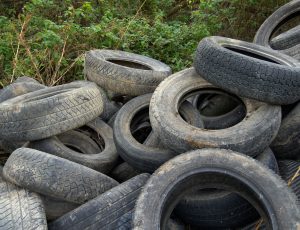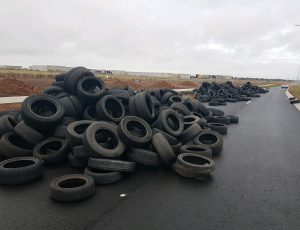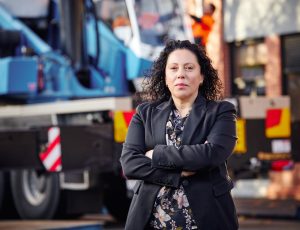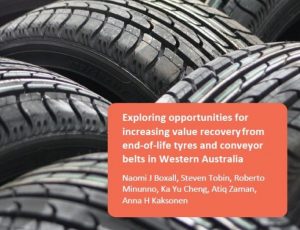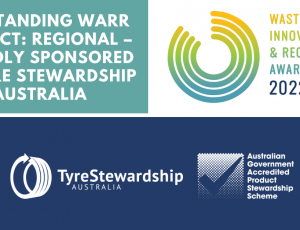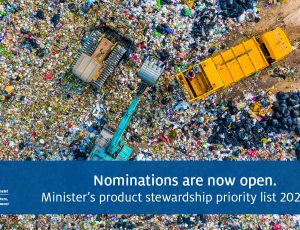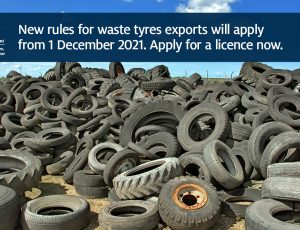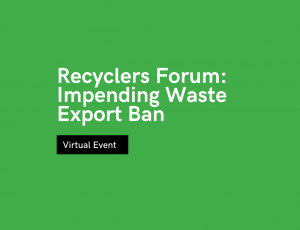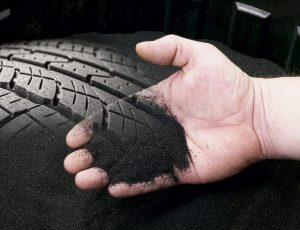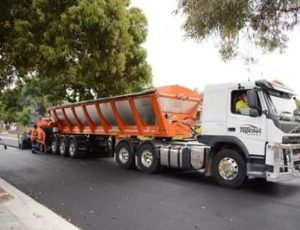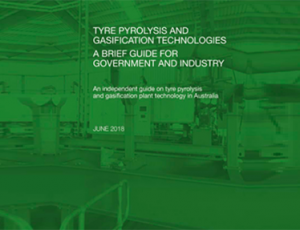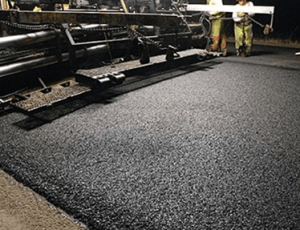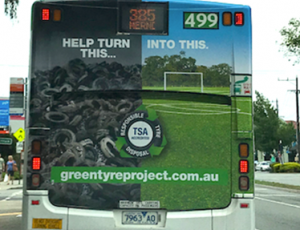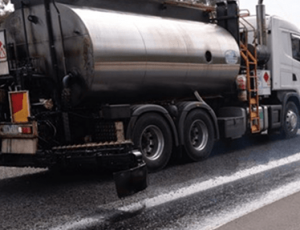Latest News

TSA News > Media Release: New Data Reveals A Worrying Trend
Media Release: New Data Reveals A Worrying Trend
14 November 2023
New data reveals a worrying trend, Australia’s dumped tyre pile is getting bigger.
Tyre Stewardship Australia (TSA) has released its tyre recovery data for 2022-2023, and things don’t look good.
Alarmingly, Australia’s recovery of used car, bus and truck (automotive) tyres is going backwards, having dropped to under 80%, a sharp downward trend since the 2019-2020 peak of 90%.
The remaining 20% might not sound like much, but it equates to 11.3 million car tyres being stockpiled, illegally dumped, landfilled, or hidden in warehouses, on industrial sites, unsuspecting landowners’ properties, and even national parks.
Hidden in plain sight: 11.3 million used tyres – greater than the population of Sydney and Melbourne combined – is an environmental nightmare for Australia.
Twenty per cent of unrecovered used tyres amplifies the already unnecessary economic, environmental, and social cost to local communities, particularly in regional, rural, and remote regions. Tyres left unrecovered increase the risk of mosquito-borne diseases, toxic fires, and contamination of our built and natural environment.
“It’s the trifecta you don’t want; the new data reveals that the economic, social and environmental cost, that our communities are footing the bill for, is only going to get worse,” said TSA CEO Lina Goodman.
First responders speak out: illegally dumped and stockpiled tyres are an increasingly challenging issue for communities and it’s not going away anytime soon.
The Waste Enforcement Association Australia (WEAA) echoes TSA’s concerns. WEAA has over 300 member organisations tackling illegal dumping and stockpiling of used tyres, and over a third of WEAA members (35%) report dumped or stockpiled tyres as a critical challenge they face.
Managing Director of WEAA, Samuel Lawson said: “Public reports of illegally dumped or stockpiled tyres in our local communities is a real concern, monthly reports are up on average 1.5 times and this serious issue doesn’t look like it is going away anytime soon.
“Litter enforcement officers are on the ground as first responders to illegal waste dumping, in every community, every day, and they’ve told us that illegally dumped or stockpiled tyres have become an increasingly challenging issue for their municipalities.
“Not only is the cost to collect and clean up these dumped tyres a financial burden, draining local government funds but also a social and environmental burden to residents of local communities far and wide across the country.”
A consistent increase in the number of tyre dumping reported to councils using the Snap Send Solve app reaffirms this trend. And it appears it is not just individuals but businesses that may be responsible for the dumped tyres, with over 80% of illegal dumping reports on Snap Send Solve involving 10 tyres or more.
Government moving forward: it’s time to stop passing the cost burden on to councils and communities.
In Australia, while councils, ratepayers and unsuspecting landowners bear the burden of the clean-up costs and the environmental and social impacts of dumped and stockpiled tyres, the power to fix this is in the hands of federal and state governments.
Federal and State Environment Ministers met last week and agreed a framework to better accelerate product stewardship, including tyres. The Environment Ministers Meeting Communique also puts the industry on notice that current voluntary schemes are “not open-ended and where industry does not respond sufficiently government will regulate…”
Goodman commended the Environment Ministers for keeping waste tyres firmly in their sights for regulation: “It’s not just about the cost, but about lost opportunities. Tyres that have been dumped and stockpiled typically end up in landfill, resulting in a lost opportunity for tyre recyclers to turn them into new products, which is a lost opportunity for Australia to stimulate commerce and business, and create new jobs.”
So, how do we tackle the 20%? What’s left to do?
This is a problem not isolated to Australia, the cost of dumped tyres is well documented, as are the solutions.
Progressive countries that have dealt with this problem have one thing in common – a regulated ‘all-in, all-tyre’ product stewardship scheme.
The current voluntary or ‘opt-in’ arrangements for the national tyre product stewardship scheme prevents the industry from discharging its responsibilities to manage used tyres and enables it to pass it on to local councils and communities. Australia needs a regulated ’all-in’ scheme.
Globally, ‘all-in’ tyre schemes regulating all tyre types (including automotive, mining, agriculture, and other off-the-road tyres) have reduced the incidents of illegal dumping, stockpiling and the rogue operators that profit from this problem.
“We’ve learnt that regulated ‘all-in’ schemes around the world succeed in driving a circular economy for tyres,” said Goodman. “The ‘opt-in’ and ‘opt-out’ approach of Australia’s current tyre voluntary scheme has only been able to go so far, and it’s not far enough.”
“An ‘all-in’ scheme means no tyre is left by the wayside which is good news for local government and ratepayers, especially regional and remote Australians, who are disproportionately impacted when it comes to dealing with dumped and stockpiled used tyres in their communities,” said Lina Goodman.
“And the story gets even better for regional and remote communities where an ‘all-in’ scheme would see the recovery of around 130,000 tonnes of mining, agriculture and other used off-the-road tyres being buried in pit or stockpiled each year; creating the opportunity for local economic growth, increased manufacturing, and ultimately regional jobs.”
Goodman concluded, “If we think we have done enough, we need to think again.”
More tyre recovery data, trends and insights can be found in TSA’s 2023 Annual Report just released.
-ends-
Background on Tyre Stewardship Australia
Australia’s tyre product steward was established in 2014 to implement the national voluntary Tyre Product Stewardship Scheme (TPSS) – an ACCC-authorised industry framework to reduce the environmental, health and safety impacts of the 56 million Equivalent Passenger Units (EPUs) which reach their end of life in Australia each year.
TSA’s vision is of a circular economy for end-of-life (EOL) tyres that contribute to a sustainable society.
It works all along the tyre supply chain to minimise waste and increase value for government, industry, businesses and consumers, by:
- Accrediting and monitoring compliance of TPSS participants – now 1,700 and counting, including tyre manufacturers, retailers, collectors, and recyclers who are committed to sustainable practices.
- Working with levy contributors to invest in market development initiatives – over $9 million invested to date, including:
- research and development
- commercialisation of new productive uses for EOL tyres driving the transformation of a waste product into a useful commodity, creating new industries and jobs while reducing the environmental harm caused by the illegal dumping of old tyres.
- Providing a range of ESG tools and services for use by government, industry, R&D and consumers, including:
- Foreign End Market Verification (FEMV) platform – the only global platform that verifies Australian-generated end-of-life-tyres are not causing environmental or social harm at their final destination.
- Sustainable Outcomes Indicator star rating which drives and promotes best practice operations and the development and use of tyre-derived materials and products in the Australian market.
- Circular Collaborator platform which supports products manufactured in Australia using Australian-made tyre-derived material.
Media contact for TSA:
Sandra Scalise, Tyre Stewardship Australia, Director of Strategic Marketing Communications
Email: sandra.scalise@tyrestewardship.org.au
Phone: 0491 272 721
Tolga Huseyin, Tyre Stewardship Australia, Marketing Manager
Email: tolga.huseyin@tyrestewardship.org.au
Phone: 0409 270 038
Resources:
Tyre Stewardship Australia Tyre Consumption & Recovery Fact Sheet – 2023
Tyre Stewardship Australia 2022-23 Annual Report
Snap Send Solve Article – Dumped Tyres Finding Solutions for a Cleaner Future – Published 10 November 2023


